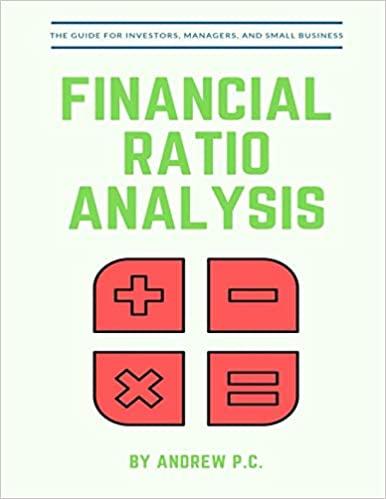Answered step by step
Verified Expert Solution
Question
1 Approved Answer
what are the first three questions? use formulas, you can use excel, bit LIST THE FORMULA. Explain how you got the answer. Long-Term Debt The
what are the first three questions? use formulas, you can use excel, bit LIST THE FORMULA. Explain how you got the answer. 



Long-Term Debt The company has a capital structure that is made up of 34 percent long-term debt, 3 percent preferred stock, and 63 percent common stock. One of the two largest domestic long-term debt issues is a 9% percent coupon bond that is due in 26 years. This debenture is currently selling for $930. The bond is callable in seven years and if called will be redeemed at a premium of 104.4375. The other large publicly held bond is a 9 percent coupon bond that is due in nine years. This debenture is selling for $972.50. Both of these bonds are rated A by Moody's. Preferred Stock The preferred stock is a $2.75 cumulative preferred with a stated value of $30.50, but it is currently selling for $30. More than 5.5 million shares were issued in February 1979 in connection with the merger of FDS Holding Company into a subsidiary of HPI. The preferred stock has no voting rights unless the company is in arrears on six or more quarterly dividends, and then each shareholder is entitled to one-quarter vote per share. In the event of liquidation each share is entitled to $30.50 plus accrued dividends. 1. Look at the 9% percent coupon bond. What is its current yield, its yield-tofirst call, and its yield-to-maturity? 2. Do you think this bond will be called? Why or why not? 3. What would be the value of the 9% percent coupon bond if the time to maturity was 10 years rather than 26 years? Can you explain why your answer is correct? Common Stock Returns from common stock come from the cash dividend payment and/or changes in the price of the stock. Investors receiving dividends can expect them to grow over time, but some stocks do not pay dividends, especially during their early growth years. As firms mature, they typically start paying dividends and then management is very reluctant to reduce the dividend. For the firms that do not pay dividends, the normal assumption is that the earnings are being retained by the firm to promote growth; thus, the stock price should grow at a higher rate than firms that have high payout ratios. Two major factors that affect the price of stock are changes in the required rate of return, caused primarily by changes in the risk, and change in the growth rate of earnings, which in turn create changes in the growth rate of dividends. The common stock of Home Products currently has over 95 million shares of $3.125 par value stock outstanding. A share of common stock presently sells for $40% and pays a quarterly dividend of $0.385. A consensus estimate (Zack's and IBES) indicates that earnings and dividends are expected to grow at an annual rate of 9.7 percent for the next five years. The common shares have no preemptive rights. Stockholders of HPI have the opportunity to buy additional shares of common stock through a plan of automatic dividend reinvestment and optional cash purchase. This plan allows stockholders to have their dividends reinvested in shares of common stock, and they can purchase additional shares at the market price (with no commission) each month. Shareholders who participate in this plan are limited to a total of $1,000 per month that they can use to purchase additional shares. In all textbooks, the valuation of stocks and bonds is simply stated as the present value of all the future cash flows expected from the security. The concept is logical, straightforward, and deceptively simple. The valuation of bonds is usually presented first, since the relatively certain cash flows are broken into an annuity and a payment of the par value at some specific date in the future. Preferred stock valuation follows bond valuation and the value of preferred stock is shown to be the present value of perpetual annuity. The cash flows from the constant-size dividend is fairly certain, and most preferred stock does not have a maturity date. Finally, common stock is presented but neither the future cash fows (from dividends) nor the final value is known with any degree of certeinty. Generally students seem to understand the bond and preferred stock valwation techniques, but they tend to be very skeptical of the common stock valuation model. Using the discounted cash fow models on an actual company can heip dispel some of the doubts, but more importantiy it can indicate how the models explain price behavior. HOME PRODUCTS, INC. Home Products, Inc. (HPD) is a leading manutacturer of prescription and ethical drugs: speciality foods and candies; and proprietary drugs. Important product nemes include Advil, Anacin, Dimetapp, Norplant, and Robitussin. Iotal revenues in the last fiscal year were in excess of 59 billion 



Step by Step Solution
There are 3 Steps involved in it
Step: 1

Get Instant Access to Expert-Tailored Solutions
See step-by-step solutions with expert insights and AI powered tools for academic success
Step: 2

Step: 3

Ace Your Homework with AI
Get the answers you need in no time with our AI-driven, step-by-step assistance
Get Started


